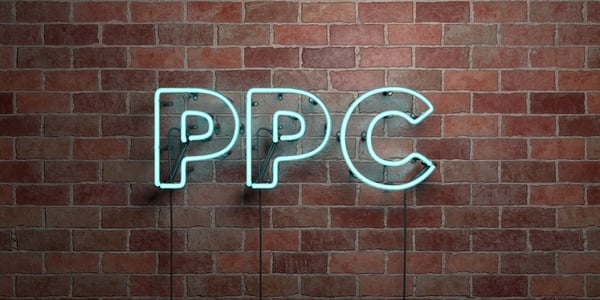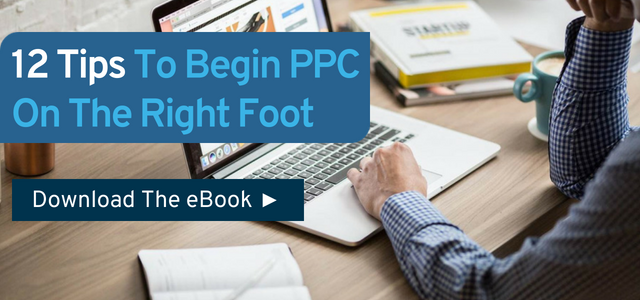11 Ways To Make Your Industrial PPC Campaign More Effective
Sam Treinish February 14, 2019
For manufacturing companies, getting started with pay-per-click advertising can be simple.
Seriously, Google touts that it takes "just a few minutes" to build your first ad. That means you can go from having absolutely no search engine presence at all to having your ads show on the first page of results in less time than it takes to heat up your leftovers for lunch. However, while the process for getting started is pretty simple, getting optimal results is a lot more difficult — especially in the manufacturing and industrial space. Laying a solid foundation can take a bit of time, but the payoff is worth it. Here are a few tips to get started with PPC on the right foot:
However, while the process for getting started is pretty simple, getting optimal results is a lot more difficult — especially in the manufacturing and industrial space. Laying a solid foundation can take a bit of time, but the payoff is worth it. Here are a few tips to get started with PPC on the right foot:
Optimizing Your PPC Campaign
Using Google's quick setup guide can be helpful, but there are a few additional tips we wanted to share with you so you don't burn through your budget by making simple, avoidable mistakes. But before you start any paid marketing efforts, you should have an optimized website, have clear goals of what you'd like to accomplish, and know exactly who you are trying to reach. For example, metal stamping shops might be similar, but not all companies and websites are the same. Every website has different structure, keywords, goals, etc. so you need to tailor based on your specific company needs.
1. Segmentation
If you're a seasoned paid marketing specialist, there's no doubt you know the importance of segmentation when setting up campaigns. Segments allow advertisers to focus their messages based on specific audiences and later collect targeted metrics. In its simplest form, campaigns and ad groups should be segmented to be clear and concise.
Advertisers create separate segments to target different factors like keyword variations, device type, time of day, locations, and even budgets. For example, a clothing retailer may segment like this:
- Campaign: Clothes,
- Ad-Group: Shorts
- Keywords: shorts, athletic shorts, etc.
2. Matching Up Ad Copy & Landing Page
As mentioned, it is very important that advertisers focus messaging across platforms based on specific audiences, and this includes using the same language in your ad copy and landing page. Ad copy is the few lines of text that will grab the attention of readers, and your landing page is the site page that you're driving these viewers to. Doing so ensures high quality score and better user experience.
3. Use Highly Relevant Keywords
Targeting the right audience is all about choosing the most relevant and effective keywords for your business. That requires not only a thorough understanding of the products and services that your business offers, but also some insight into how customers are searching for those things.
Just like every search query, every keyword is unique. It's best practice that you adjust bids based off KPIs and keyword performance. The best places to start are your website, your competitors’ websites, and the Google Keyword tool. One piece of advice is to use highly targeted keywords and match types, especially when starting out.
If your business sells commercial air compressors, don’t just bid on “air compressors.” In fact, you probably shouldn’t bid on “air compressors” unless you have a really extensive list of negative keywords ready to block all the consumer traffic that keyword is likely to attract. Instead, bid on keywords like “200 gallon air compressor” or “two stage air compressor manufacturer,” where the intent of the searcher is a lot more clear and relevant to the products you sell.
The more specific your keywords are, the better your conversion rates will be.
4. Choose Where You Want to Advertise
By default, Google AdWords automatically serves ads in the United States and Canada.
If your business is able to ship products anywhere, then that may be fine for you. If not, you will need to adjust those settings — by country, state, certain geographic areas, certain miles within a zip code, etc.
Another consideration here is budget: If you only have $500 or $1,000 a month to work with, trying to cover such a broad geographic area could be a stretch. Your budget could spread too thin and force your ads to run for only a few hours a day. If that’s the case, you may want to consider setting up geographic targeting for a particular region or state.

5. Choose When You Want to Advertise
Most B2B leads come in on the weekdays between 9 a.m. and 5 p.m. (Industry is full of early risers, though, so plenty of our clients get those 8 a.m. RFQs coming through.)
We definitely recommend setting up an ad schedule when you're starting out. From a marketing and sales standpoint, it's also a good idea to have leads come in when your business is best equipped to act on them. Just make sure you adjust your daily allowance to account for the fewer number of days.
Caution: "Where" and "when" go hand in hand, so if you're setting up time constraints, be cognizant of time zones across your network.
6. Add Negative Keywords
This is one of the important tips starting out with PPC Negative keywords prevent your ads from showing on unwanted search queries. Without negative keywords, an account will end up wasting a ton of money on irrelevant search queries.
For example, if someone is searching for a VHS tape converter to transfer their wedding video to DVD, why should they click on an ad for an industrial tape converter that cuts pressure sensitive adhesives to custom lengths?
To prevent this from happening, include “VHS” in your list of negative keywords if you don’t want to rack up a bunch of irrelevant clicks and impressions.
Moreover, there are certain negative keywords that almost every account should have right out of the gate: free, cheap, used, textbooks. Having these types of keywords in your account from the start will give your campaigns the best chance for success.
7. Opt Out of the Display Network
The default setting when creating a new campaign is "Search Network with Display Select." This means that your ads will show up not only for relevant queries in search results, but also across the Google Display Network on the side of websites that Google believes are highly relevant to your keywords.
The Google Display Network includes 2 million publisher sites and reaches somewhere around 90% of Internet users worldwide. Although using this hybrid campaign style may seem like a good idea, it’s also a quick way to spend a large portion of your budget on clicks that are not all that relevant to your business.
Think of it this way: Would you rather spend money on a click where a user goes to Google and searches for “metal stamping companies in Illinois” or on a click from a user that saw your ad while browsing the Internet and wants to learn more about your company?
Both might be good clicks; however, in the real world, most companies don’t have unlimited budgets and if your goal is to maximize your return on investment, I would go with the first click every time.
If, at some point, you decide to test out the Display Network, you should create a separate campaign and budget.
8. Utilize Ad Extensions
Depending on what your advertising you can add extensions to your ad to promote things such as, promotions, locations, phone number, various landing pages. This is a great way to take up more real estate on Search Engine Result Pages (SERPs).
.png?width=600&name=Ad%20labels%20(2).png)
9. Optimize Based On Performance
Depending on who your target audience is they might prefer searching on mobile instead of desktop. Set up bid modifiers to ensure you are appearing on the right device. A bid modifier allows advertisers to increase or decrease bids based on location, device and time.
10. Utilize Remarketing
Remarketing is a clever way to connect with visitors that were not ready to make a purchase decision the first time they were surfing your website. This method allows advertisers to position targeted ads in front of this type of audience while they browse elsewhere on the web.
But how do you know which visitors have viewed your site previously? This is where cookies come into play. By placing cookies on your site, you're able to track visitors based on their cookie ID, which you can then add to your remarketing audience list to specifically re-target those users.
Chances are that if a user has been to your site before, they are going to be more qualified. Depending what your goals are for advertising through PPC, it may be more important and efficient to target them more frequently than people who have not been to your site.
11. Don't Be Afraid to Test
Much like our growth-driven design principle, you can't be afraid to be flexible. Use A/B testing to try out different approaches, and then adjust your PPC strategy according to the data and results. You'll want to adjust your spending, targeting and all the other factors we discussed above depending on the results you receive — and that's a good thing! It's all about maximizing your ROI and getting relevant clicks over to your website.
Learn More PPC Campaign Tips
If you are new to PPC, or if you need some tips to get your strategy — and your budget — back on track, our eBook can help. Download your free copy of 12 Tips To Begin PPC On The Right Foot now. And here's a bonus tip to get seen by more buyers — set up a free listing on Thomasnet.com where more than 900,000 buyers are searching for your products and services right now.
Did you find this useful?









